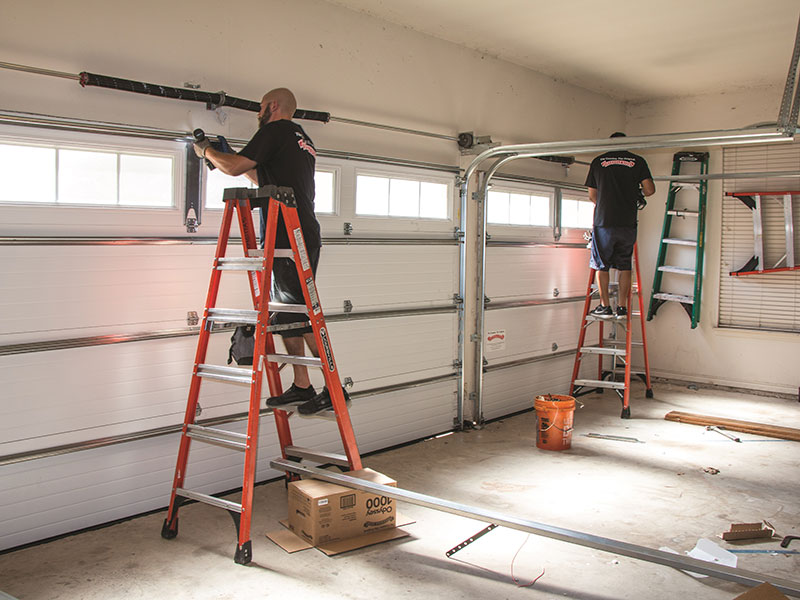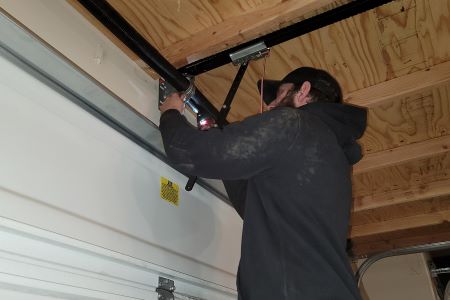Common Garage Door Troubles and Exactly How to Take care of Them
Garage doors are important for both security and benefit, yet they commonly provide a selection of typical problems that can irritate home owners. While some issues may show up straightforward to settle, others may require an extra nuanced understanding of garage door mechanics.
Noisy Garage Door Procedure
A loud garage door procedure can be a substantial source of nuisance for home owners, often showing underlying mechanical issues. Such disturbances may come from numerous causes, consisting of damaged rollers, loosened equipment, or not enough lubrication. Identifying the source of the noise is vital for effective resolution.
One common cause of too much noise is the visibility of rustic or damaged rollers. Over time, these elements can weaken, leading to grinding or squealing audios as the door actions. Normal examination and substitute of these rollers can considerably decrease noise levels. Additionally, loosened bolts or screws in the door system can create rattling sounds throughout procedure. Tightening up these fasteners makes sure a more stable and quieter movement.
One more adding element is inadequate lubrication of the door's relocating parts. Using a premium lubricant to the tracks, springs, and rollers can greatly decrease rubbing and noise. Property owners ought to do this maintenance regularly to preserve optimal performance.
Last but not least, the garage door opener might likewise create noise because of its age or mechanical problems. If the sound continues despite attending to other aspects, getting in touch with a professional for a thorough examination and potential repair work might be necessary.
Door Won't Open Up or Shut
Experiencing a garage door that won't open up or close can be unbelievably aggravating and frequently signals a malfunction within the system. A number of elements can add to this concern, and determining the root reason is crucial for reliable resolution.

Next, inspect the safety and security sensors situated at the base of the door. These sensors can come to be misaligned or blocked by debris, preventing the door from running correctly. Clean the sensors with a soft towel and guarantee they are lined up.
Furthermore, the garage door's internal components need to be evaluated. Problems such as a damaged springtime, damaged rollers, or a damaged opener can hamper motion. If any type of components seem damaged, it might be suggested to speak with an expert for fixings.
Misaligned Tracks
(Quick and Easy)Misaligned tracks can severely disrupt the smooth procedure of a garage door, causing operational failings such as irregular motion or total immobilization. This issue commonly emerges because of a variety of aspects, consisting of damage, unintended effects, or improper setup. When the tracks are misaligned, the rollers can stagnate openly, which not just stresses the electric motor however likewise poses security dangers.
If you discover any kind of disparities, it is vital to deal with the concern promptly. Carefully touch the track back right into its right setting using a rubber club or a similar device, guaranteeing it is straight and level.
As soon as the positioning is fixed, retighten the screws to secure the track. For a more irreversible solution, consider strengthening the tracks with extra braces. Regular upkeep, consisting of cleaning up the tracks and guaranteeing rollers are in excellent problem, can protect against future imbalances. By addressing misaligned tracks immediately, you can recover the performance of your garage door and enhance its durability.
Broken Springs
Among the numerous elements of a garage door system, damaged springtimes are one of one of the most usual problems that can dramatically impede its functionality. Garage door springs are critical for stabilizing the weight of the door, enabling smooth opening and go right here closing. When a springtime breaks, it can bring about a door that is challenging to run or, sometimes, completely unusable.
There are 2 primary kinds of springtimes: torsion springs, which are mounted above the door, and extension springtimes, found on either side. Signs of a busted springtime include a door that will not open up, a noticeable void in the spring, or a loud sound throughout operation. Attempting to run a garage door with a damaged spring can trigger additional damages to the door or the opener.
Repairing busted springs is not a do it yourself job; it needs specialized tools and experience as a result of the high stress entailed. It is recommended to speak with an expert technician who can safely change the springs and guarantee the door is effectively stabilized. Routine maintenance and examinations can help prevent springtime failures and prolong the life-span of the garage door system.
Remote Issues

The very first step is to check the batteries in the push-button control. Change them if they are weak or dead. If the remote still stops working to operate, examine the garage door opener to make certain that its sensing units are tidy and unobstructed. Dirt, debris, or misalignment may impede the signal transmission in between the remote and the opener.
Interference from other digital tools can also impede remote performance. Guarantee that nearby tools, such as cordless routers or cordless phones, are not causing interruptions. garage door service. If interference is suspected, try moving these gadgets better far from the garage door opener
In some situations, the remote might require to be reprogrammed. Consult the supplier's guidelines to reset the push-button control and synchronize it with the garage door opener. If all else fails and the remote remains to malfunction, consider getting in touch with an expert specialist for an extensive evaluation and possible substitute of the remote or opener.
Conclusion
(Instant Help)In summary, typical garage door troubles can significantly influence performance and safety and security. Addressing loud operation includes lubrication and tightening hardware, while problems with opening or closing need evaluation of power sources and sensors. Misaligned tracks can be corrected through change, although damaged springs necessitate professional intervention. Remote control breakdowns commonly arise from weak batteries or interference, which can be solved with substitute or reprogramming. Aggressive maintenance and timely repairs can make certain optimum efficiency and long life of garage doors.